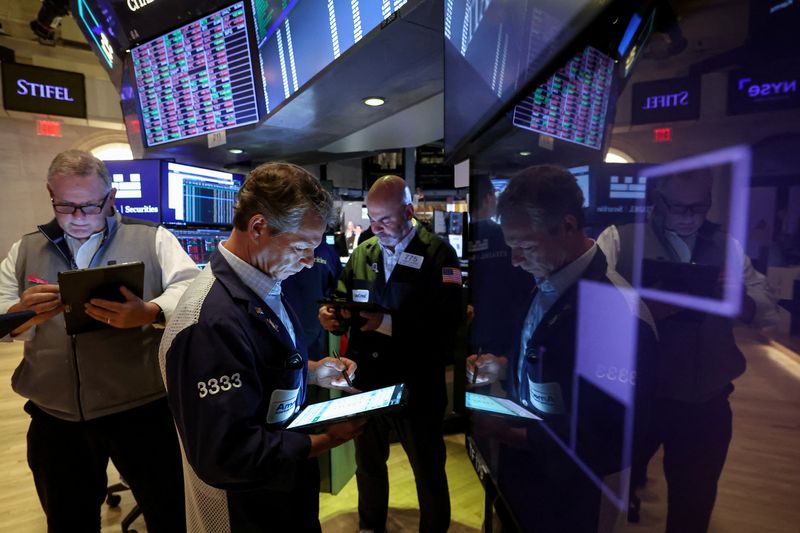
By Lewis Krauskopf
NEW YORK (Reuters) -Market momentum following the U.S.-China trade truce has put stocks back in sight of record highs but wariness about the economic fallout from remaining tariffs and higher equity valuations could slow gains in the near term.
The S&P 500 has soared 18% since hitting its low closing point for the year on April 8, erasing the benchmark index’s losses for 2025 and putting it roughly 4% from its all-time peak reached in February.
However, the S&P 500’s price-to-earnings ratio has hit a two-month high while 2025 profit growth estimates have fallen since the start of the year. While U.S. tariffs seem less harsh than before, the import levies still could pressure corporate profits and consumer spending, causing unease about the economy, investors said.
“Momentum is very strong, so it could carry markets up here,” said Anthony Saglimbene, chief market strategist at Ameriprise Financial. “But I think for markets to maintain those levels it is going to be difficult because the environment is still uncertain.”
For now, fears of worst-case trade scenarios causing a recession are waning. The relief has fueled the market rebound after U.S. President Donald Trump’s April 2 announcement of sweeping global tariffs set off dramatic volatility and sent stocks swooning.
Equities got an extra kick higher this week from a 90-day U.S.-China truce reached over the weekend that slashed tariffs from over 100% on both sides, and cooled off a trade war between the world’s two largest economies.
The overall effective U.S. tariff on imports is down to 14% from 24% previously, according to JPMorgan economist Michael Feroli, but still above the rate of 2.3% in 2024.
“The new, lower tariff rates are still a boost to inflation, and hence a depressant on real disposable income and real consumer spending,” Feroli said in a note on Tuesday.
With first-quarter earnings season winding down, U.S. companies have so far reported earnings well above expectations. However, analysts have trimmed full-year earnings estimates to a gain of 8.7% instead of 14% at the start of the year, according to LSEG IBES.
“We’ve seen valuations make a roundtrip while earnings estimates have come down, so further gains are going to be harder to come by” in the short term, said Angelo Kourkafas, senior investment strategist at Edward Jones.
The forward price-to-earnings ratio for the S&P 500, based on earnings estimates for the next 12 months, this week rose above 21 for the first time since early March, according to LSEG Datastream. That P/E ratio is well above the index’s long-term average of 15.8 and a sharp rise from the 17.9 level it fell to at the market lows in April.